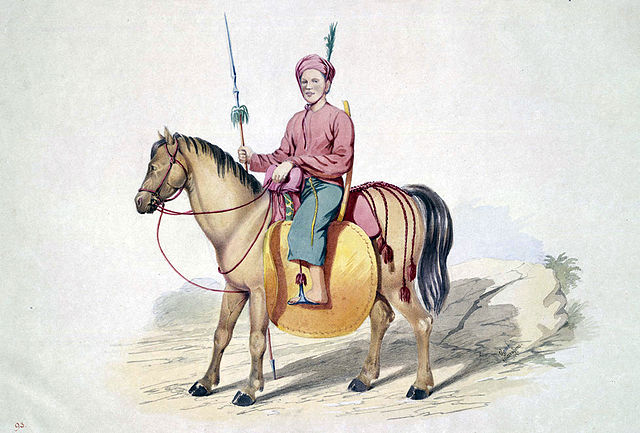Top Qs
Timeline
Chat
Perspective
Kangleipak
Early Meitei civilization From Wikipedia, the free encyclopedia
Remove ads
Kangleipak was an ancient, lesser known civilisation, consisting of the modern day Manipur, India which is still known to some residents as Kangleipak, and other neighbouring regions.[1][2][3][4] The Kangla served as the foremost capital city of this realm from the 15th century BCE, up to medieval times.[5]


An editor has determined that sufficient sources exist to establish the subject's notability. (June 2025) |
Remove ads
History
Summarize
Perspective
The Kingdom of Kangleipak (present-day Manipur, India) was an independent monarchy with a rich cultural and political history. Traditionally believed to have been founded in 33 CE by King Nongdā Lāiren Pākhangbā, Kangleipak was ruled by Meitei kings, who established a distinct administrative system and patronised the indigenous Sanamahism religion.[citation needed]
Throughout its history, Kangleipak experienced periods of internal consolidation, external conflicts, and cultural exchanges with neighbouring regions, including Burma (Myanmar) and Assam. The kingdom saw a significant transformation during the reign of Gharib Niwaz (1709–1748), who expanded its territory and introduced Hinduism as a dominant religious influence.[citation needed]
In the 19th century, the Anglo-Manipur relations intensified, culminating in the Anglo-Manipur War of 1891, after which the British annexed the kingdom, making it a princely state under British rule. Following India’s independence in 1947, Kangleipak was merged into the Indian Union in 1949, leading to its present status as the state of Manipur.

Remove ads
Geography
Summarize
Perspective
The territory of this realm is mountainous and thereby, ancient Kangleipak consists of several smaller region each with its own dialect, cultural peculiarities, and identity.[4][6] At one time during the reign of Meidingu Khagemba the territory of Kangleipak(Manipur) stretched up to the present Yunnan Province of modern day China.[7][better source needed] Kabaw valley in Myanmar was also a part of Manipur until the then Prime Minister Jawaharlal Nehru India gifted it to Myanmar on his visit to Manipur in 1952.[8][better source needed] Thibomei(now Kohima) was also once annexed by the then King Gambhir Singh.[9][better source needed]
In fact, there were seven independent kingdoms ruled by the seven clan dynasties in this realm. These seven principalities had their own capital cities.
Remove ads
Language
The Ancient Meitei language (early form of the modern Meitei language) had a wide array of Meitei scriptures (Puya (Meitei texts)), of numerous topics, written in the archaic Meitei script.[10][11] One of the oldest scriptures is the Wakoklon Heelel Thilen Salai Amailon Pukok Puya, written in 1398 BC (verified by the National Archives of India, New Delhi).[12]

Culture

Daily life
Most people of ancient Kangleipak were farmers tied to their lands. Their dwellings were restricted to immediate family members.[citation needed]
Architecture
The ancient architectural designs of common houses were believed to be sustainable, eco friendly and affordable. It gives a cooling effect during hot summer and a warming effect during chilling winter.[13]
Religious beliefs

The ancient religion of the indigenous ethnicities of the hills and the plains is the Sanamahism. The abstract concept of the space time entity is the ultimate God creator of the universe.[14] Beliefs in the divine and in the afterlife were ingrained in ancient Kangleipak from its inception. The ancient rulers were based on the divine right of kings.[14]
Remove ads
Military

The Ancient Meitei military ran in the Lallup system. Lal-lup system (literally, Lal means war; lup means club or association or organization) was a predominant system in ancient Kangleipak. According to the system, every men of indigenous ethnicity of above 16 years of age was a member.[14]
Related pages
References
Other websites
Wikiwand - on
Seamless Wikipedia browsing. On steroids.
Remove ads
